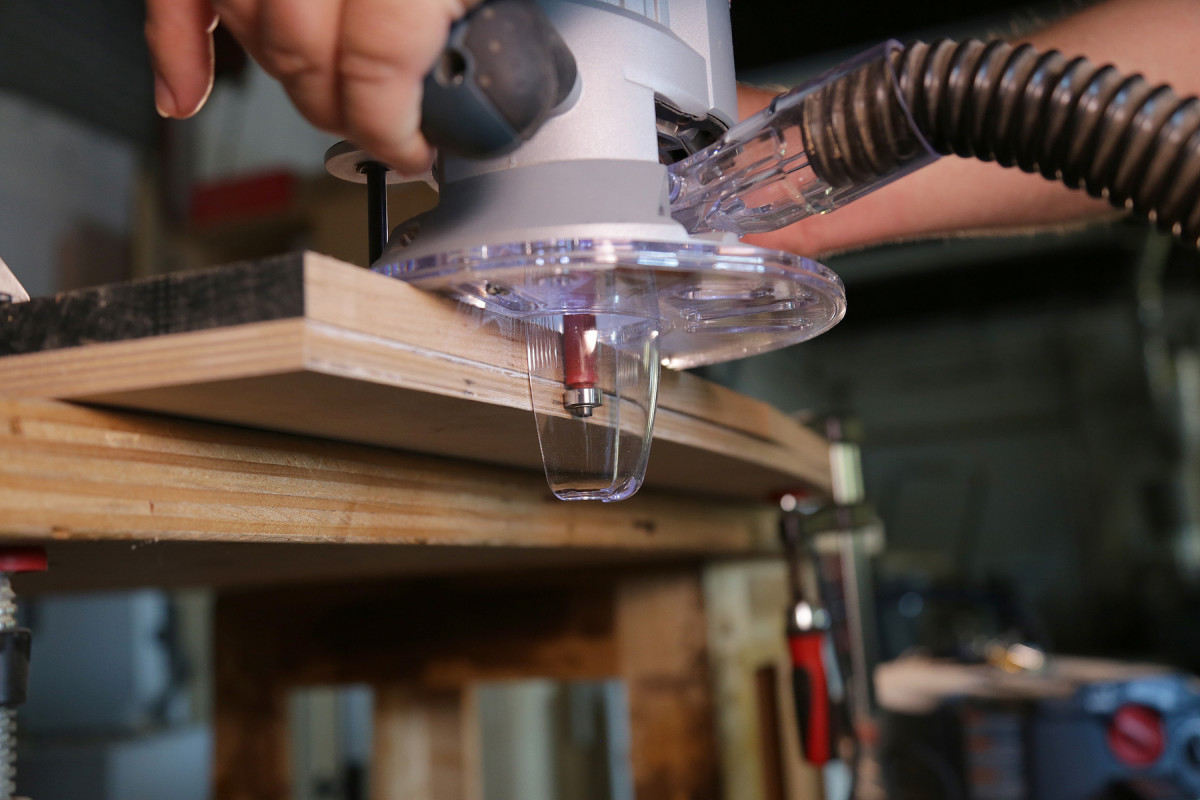We may receive a commission when you use our affiliate links. However, this does not impact our recommendations.

This respiration-protection attachment lives up to the claim of its name.
Tool: Dust-Free Router Hood Shop Now
Manufacturer: Oneida
MSRP:$34.95
While I appreciate the versatility and power of a handheld router, I often turn to other tools for its typical tasks, in large part because of the dust and noise a router creates. While it doesn’t mitigate the noise issue (of course), the Oneida Universal Dust-Free Router Hood does indeed effectively divert virtually all router dust and chips to the vacuum. I was, in short, astounded by how well it works – and it costs only $35.

Impressive. To get the detail shot at right, we used a fast speed on the camera and took the photo while making a cut – no dust was captured in the image; it was all captured by the router hood. This thing really works.
I tested the Router Hood on our trusty Bosch 2.3-horsepower MRC23EVSK router kit, using both the plunge and fixed bases, hooked up to a Bosch 14-gallon dust extractor.
The 7″-diameter two-part clear polycarbonate base plate has multiple mounting holes and patterns, allowing it to mate with the sub-base of most mid-size modern plunge and fixed-base routers – there’s a list of compatible routers on the website under “FAQs,” as well as a downloadable PDF of the screw-hole positions so you can print it out and figure out which holes will match your base, without simultaneously fussing around with the slippery parts. The Router Hood is not compatible with most trim routers, nor does it work in a router table.
In between the two plates, slip the “dust dome,” then screw the plates in place to your router’s sub-base. The dome swivels in the center (so as not to limit the router’s motion), and snaps into a quick-release connector (which also swivels freely) that fits 1 1⁄2“-diameter hoses for dust collection. (A hose extension with a 2 1⁄2“-diameter coupling is available for $19.99.)
I had some concern about the dome – which sticks up about 1⁄4” into the collet area – making it difficult to get wrenches in there to change bits (because yes, sometimes I am lazy and prefer to not remove the base for that operation). My fear was unfounded; they fit.
Below the bit, snap either the provided deep or shallow chip cover in place on the base-plate assembly, depending on the length of bit (the deep cover is shown above), and dust is captured both above and below the cut. (As with the hood and hose connector, the chip covers rotate out of the way of the cut.) Both of the chip covers are easily removed without tools for through-cuts and plunge cuts on a workpiece interior. Without the covers, the dust and chip collection is slightly less effective (but still impressive).
The maximum edge-bit diameter is 2 1⁄8“; for plunge operations, it’s 1 1⁄4“.
My only hesitation in wholeheartedly recommending the Router Hood is that some of the components feel a little flimsy – particularly the chip covers. But they have to be flexible enough to squeeze them slightly to fit them in place. So I’d be careful to squeeze just enough, and no more – they feel as if they could break under too much pressure. But that’s an awfully minor and perhaps unfair concern; time will tell. This router attachment does a better job of dust collection than any I’ve used. I’m buying one for home.
Here are some supplies and tools we find essential in our everyday work around the shop. We may receive a commission from sales referred by our links; however, we have carefully selected these products for their usefulness and quality.









